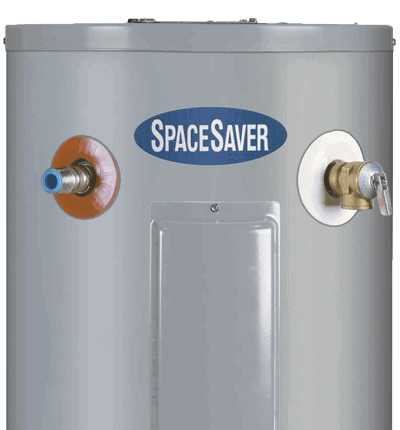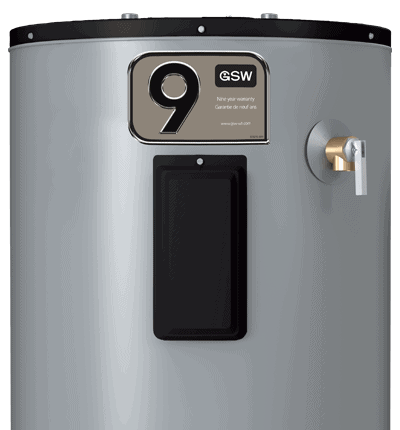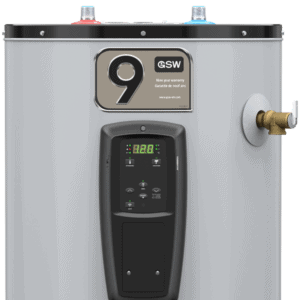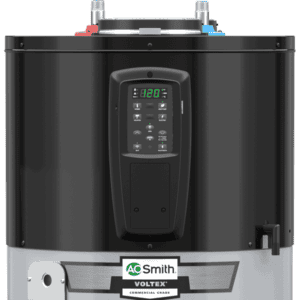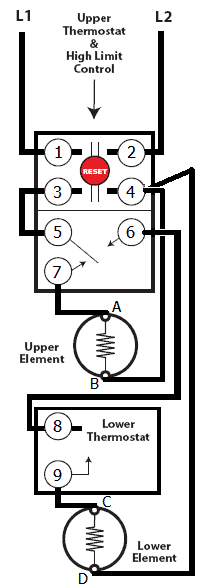When power is initially turned on to the unit, the upper element is energized and heats the water in the upper third of the tank.
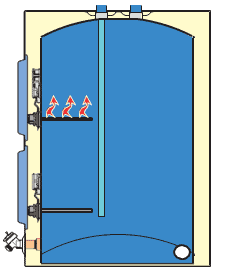
When the upper third of the tank is heated to the upper thermostat, power is switched to the lower heating element. The lower element continues to heat until the water temperature in the lower portion of the tank is heated to the lower thermostat setting.
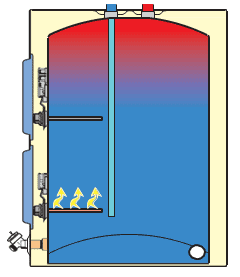
As hot water is drawn from the top of the tank the dip tube delivers cold water to the bottom of the tank.
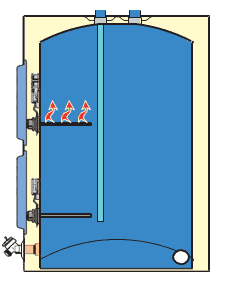
Eventually the cold water mixes with the hot, lowering the temperature below the thermostat setting and the bottom element is energized. If enough water is drawn to cool the upper-third of the tank, the upper thermostat will send power to the upper element first. When the upper-third of the tank is heated, power will again be switched to the lower element. If the upper element burns out, the water heater will cease to function because the upper thermostat will never be satisfied and power will never be switched to the lower element. If water temperature in the tank reaches 180°F, the manual reset hi-limit switch will be tripped. This switch can be reset by firmly pushing the red button above the upper thermostat.

If enough water is drawn to cool the upper-third of the tank, the upper thermostat will send power to the upper element first. When the upper-third of the tank is heated, power will again be switched to the lower element. If the upper element burns out, the water heater will cease to function because the upper thermostat will never be satisfied and power will never be switched to the lower element. If water temperature in the tank reaches 180°F, the manual reset hi-limit switch will be tripped. This switch can be reset by firmly pushing the red button above the upper thermostat.
Single-element water heaters have one element mounted at the bottom of the tank controlled by a single thermostat and high limit switch.


